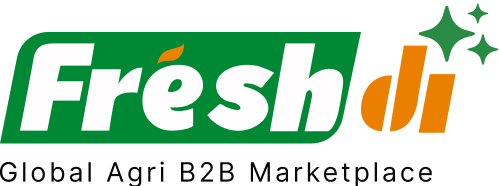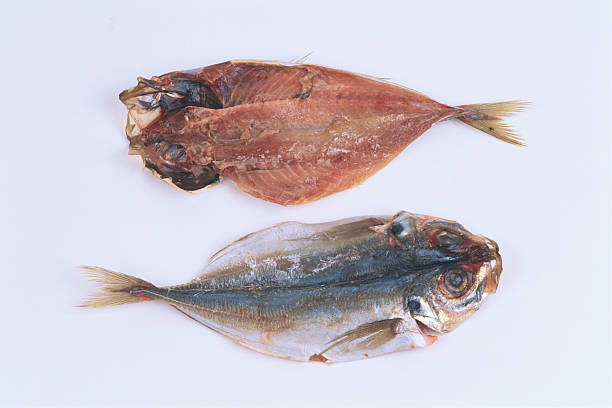Introduction – Current State of Play: The Dried Fish Sector in Brazil
The dried fish market in Brazil is undergoing a whirlwind of change in Q3 2025. From sudden trade barriers to shifting consumer patterns and climate disruptions, the sector is being reshaped at breakneck speed.
In July 2025, the U.S.—Brazil’s largest seafood customer—imposed steep tariffs of up to 50% on Brazilian seafood imports, including dried varieties. This move sent shockwaves through the industry. Production lines were halted, export shipments turned back, and thousands of workers faced job insecurity. The Brazilian Fisheries Association (Abipesca) didn’t mince words—it called the situation dire.
But Brazilian exporters aren’t standing still. In response, they’re pushing into new markets, notably Europe and Australia, and working to reduce their reliance on the U.S. Meanwhile, internal challenges are mounting. Brazil’s corn—key for fish feed—is increasingly diverted to ethanol production, raising feed prices. On top of that, droughts in the Amazon have thrown transportation logistics into disarray.
And let’s not forget the consumer. Since the COVID-19 pandemic, Brazilians are buying more frozen and dried fish online than ever before, moving away from traditional wet markets.
In short, the landscape is shifting fast. For buyers, suppliers, and traders alike, staying informed and adaptable is no longer optional—it’s mission-critical.
Deep Dive – What’s Making Headlines? Key Recent News & Impacts
While the sector hasn’t seen major new tech investments or breakthroughs this quarter, the headlines are dominated by:
- Trade Disruptions: The U.S. tariffs introduced in July 2025 are causing major export slowdowns and revenue losses.
- Domestic Consumption Shifts: Consumer behavior continues to lean toward durable fish products—like dried and frozen fish—purchased through supermarkets and online platforms.
- Climate Impact: Droughts are impacting supply chains, particularly in regions dependent on river transport.
- Input Cost Increases: Corn, crucial for fish farming, is becoming pricier as it’s funneled into Brazil’s growing corn ethanol sector.
These developments are pushing companies to rethink sourcing strategies, pricing models, and target markets.
Top 10 Verified Dried Fish Suppliers in Brazil – Relevant in the Current Climate
In this volatile environment, choosing the right supplier is more important than ever. Based on export capacity, certifications, verified buyer reviews on Freshdi, and adaptability to current market conditions, here are the top 10 dried fish suppliers in Brazil for Q3 2025:
-
Baequip Power Solutions
A standout for its diversified portfolio and strong logistics network, especially amidst the current drought-related transport challenges. -
001 A & W Pizzaria Ltda
Known for maintaining consistent supply even during logistical disruptions. They’ve recently expanded into processed dried fish to meet shifting demand. -
Navsupply Ship Chandler
Specialized in supplying to maritime and offshore clients, this supplier is favored for its flexibility and quality control. -
Greenfish Brasil
Sustainability-focused and export-ready, Greenfish is gaining attention for its traceable sourcing and fresh-dried fish offerings. -
Corporacion Euro Caribe Andina – Peru
Though based in Peru, this supplier maintains a strong operational presence in Brazil and caters to high-volume international buyers. -
Grupo Serrano Imp. & Exp. Ltda.
With a robust export track record and a focus on compliance, this group is a safe bet for buyers navigating new trade restrictions. -
Ocean Harvest Brasil (Not listed on Freshdi)
A long-time player in the Amazon region, now facing challenges due to drought but valued for its premium dried river fish. -
Marisqueira do Sul (Regional brand)
Known for its artisanal drying methods and supply to boutique markets in Europe—especially relevant with Brazil’s shift to EU markets. -
Pesque Brasil Ltda (Emerging supplier)
Recently gained HACCP certification, now positioning itself aggressively in the Australia and Bolivia markets. -
Nova Atlântica Exports (New entrant)
Rapidly climbing the ranks thanks to competitive pricing and real-time order tracking features on Freshdi.
Dynamic Ranking Note:
Freshdi’s supplier leaderboard reflects real-time activity, including “Suppliers of the Month/Quarter” based on RFQ fulfillment rates, buyer feedback, and international order volume. Rankings may shift based on new developments, so check Freshdi regularly for updates.
Market Navigation – Strategic Responses to The Current Dried Fish Landscape in Brazil
Navigating the Brazilian dried fish landscape in Q3 2025 isn’t easy. But it’s not impossible either—especially if you know where the winds are blowing.
Opportunities to Seize:
-
Australia Opens Its Doors: In May 2025, Brazil scored big when Australia approved imports of wild-caught Brazilian fish. This includes species like croaker and hake, which are often dried for niche markets. This move opens up a lucrative new export channel—one not impacted by U.S. tariffs.
-
Aquaculture Boom: Brazil’s aquaculture sector is on fire. In Q1 2025, exports hit $18.5 million, a 112% jump from last year. Tilapia is leading the charge, and much of it is processed into dried formats for longer shelf life and easier transport.
Challenges to Watch:
-
Loss of the U.S. Market: With the U.S. accounting for 81% of Brazil’s fish exports before the tariffs, losing access to that market is a major blow. The $400 million gap isn’t going to fill itself.
-
Feed Costs Rising: Corn is becoming pricier due to Brazil’s growing ethanol industry. That means higher fish production costs, which could squeeze margins—especially for dried fish, which already requires additional processing.
-
Logistics Nightmare in the Amazon: Ongoing droughts are drying up riverways, delaying shipments of fish feed and making it harder to transport dried fish out of the northern regions.
Strategic Adjustments:
-
Diversify Markets Fast: Companies are pivoting from the U.S. to Australia, Bolivia, and potentially China. Freshdi reports a spike in RFQs targeting these new regions—a sign that buyers are already adjusting.
-
Go Upmarket: Focusing on high-value products like gourmet dried fish or vacuum-packed selections for retail chains can help offset lower volumes with higher margins.
-
Rethink Sourcing Regions: Suppliers closer to coastal ports or with strong road/rail networks are more dependable right now than those in interior Amazonian regions.
Conclusion – Key Takeaways for Businesses in a Fast-Moving Market
The Brazilian dried fish market in Q3 2025 is a tale of turbulence—and opportunity. With U.S. tariffs shaking the foundation of Brazil’s seafood exports, companies are being forced to act fast. New markets like Australia are opening just in time, but they come with their own demands.
For buyers, the message is clear: be nimble. Re-evaluate your sourcing strategies, prioritize suppliers that are agile and certified, and keep a close eye on emerging trade flows.
Platforms like Freshdi are proving invaluable. By offering verified supplier profiles, real-time RFQ trends, and dynamic supplier rankings, Freshdi helps businesses make smart, timely decisions.
Checklist for Dried Fish Buyers in Brazil (Q3 2025):
- ✅ Verify supplier certifications and export readiness
- ✅ Avoid Amazon-based suppliers if logistics are critical
- ✅ Prioritize suppliers active on Freshdi with positive RFQ metrics
- ✅ Explore new markets (Australia, Bolivia, China)
- ✅ Track corn/feed prices and factor into procurement costs
- ✅ Stay updated on tariff negotiations and trade news
The Future Outlook
What’s next? Expect further diversification in Brazil’s seafood exports. China could be the next big market. Domestically, we’ll likely see more investment in processing infrastructure to boost the value of exports like dried fish. And if the government steps in with credit lines and trade diplomacy, the sector could bounce back stronger than ever.
Platforms like Freshdi will play a crucial role—connecting buyers with reliable suppliers and offering the kind of intelligence needed to navigate a market in flux.
FAQs
1. What are the main challenges facing Brazil’s dried fish industry in Q3 2025?
The biggest challenges include steep U.S. tariffs, rising fish feed costs due to corn being diverted to ethanol production, and logistical disruptions from Amazon droughts.
2. Why is Freshdi considered a valuable platform for sourcing dried fish in Brazil?
Freshdi offers real-time supplier verification, buyer reviews, RFQ trends, and dynamic rankings that help buyers choose the most reliable and responsive suppliers.
3. Which new markets are Brazil’s dried fish exporters targeting?
Australia and Bolivia are two of the most promising new markets. Brazil is also exploring opportunities in China and working to regain access to European markets.
4. How are Brazilian suppliers adapting to the loss of the U.S. market?
They’re focusing on higher-value products, diversifying their export destinations, and strengthening processing capabilities to meet global standards.
5. What fish species are most commonly dried and exported from Brazil?
Tilapia, croaker, and hake are among the most commonly dried and exported species, especially to new markets like Australia and Asia.
References
- dir.tridge.com – Brazil Fish Market Insights
- foodmanufacturing.com – Amazon Drought Supply Chain Impact
- spglobal.com – Brazil Corn Ethanol Demand
- embrapa.br – Fish Consumption Trends
- gov.br – Export Approval to Australia
- datamarnews.com – Aquaculture Export Records
- reuters.com – U.S. Tariff Impact on Brazil’s Seafood Industry


